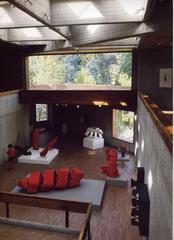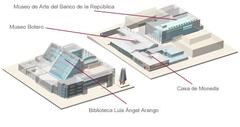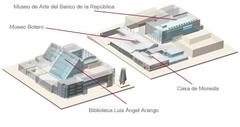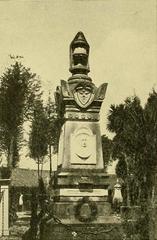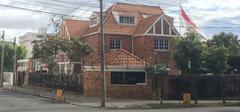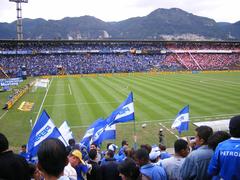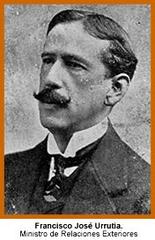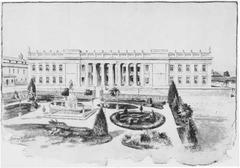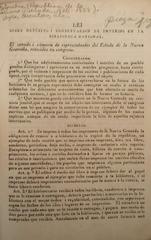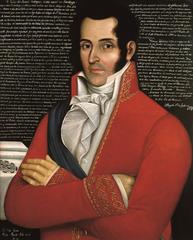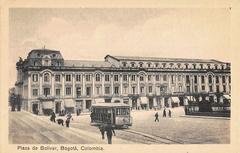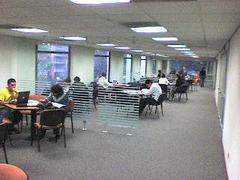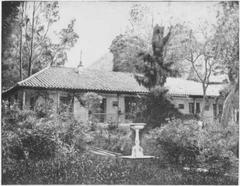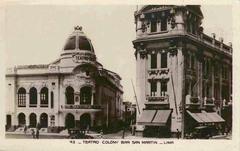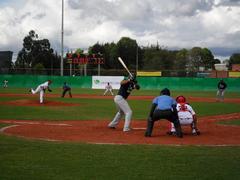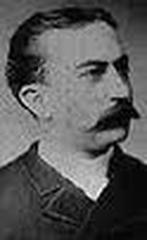Visiting Bogotá Botanical Garden: Tickets, Hours, and Essential Tips
Date: 04/07/2025
Introduction
Nestled within Colombia’s bustling capital, the Bogotá Botanical Garden (Jardín Botánico José Celestino Mutis) is a remarkable sanctuary dedicated to the country’s dazzling biodiversity, scientific research, and cultural heritage. Since its founding in 1955, the garden has flourished as Colombia’s largest botanical collection, spanning approximately 20 hectares and showcasing more than 1,300 plant species from across the nation’s diverse ecosystems. Honoring the legacy of Spanish botanist José Celestino Mutis, the garden provides immersive experiences—from educational trails to innovative greenhouses—designed to bring Colombia’s unique flora and conservation efforts to life.
Whether you’re drawn to the vibrant orchid displays, eager to attend cultural festivals, or interested in learning about Colombia’s environmental initiatives, planning your visit is crucial. This guide provides authoritative information on visiting hours, ticket options, accessibility, and top attractions, as well as travel tips to ensure a seamless and enriching experience. For the latest updates, visit the official Bogotá Botanical Garden website or the Colombia Tourism Board.
Table of Contents
- About the Botanical Garden
- Historical Background & Scientific Mission
- Biodiversity Conservation
- Architectural Highlights: The Tropicario
- Main Attractions and Visitor Experience
- Visiting Hours, Tickets, and Accessibility
- Travel Tips & Nearby Attractions
- Cultural and Environmental Significance
- Frequently Asked Questions (FAQ)
- Conclusion & Call to Action
- References and Further Reading
About the Bogotá Botanical Garden
The Bogotá Botanical Garden is a must-visit destination for nature enthusiasts, families, and travelers looking to explore Bogotá’s cultural and ecological richness. It is a living museum and scientific center that offers insight into Colombia’s remarkable biodiversity, with themed gardens, educational exhibits, and interactive programs for all ages.
Historical Background & Scientific Mission
Founded in 1955 in honor of botanist José Celestino Mutis—leader of the historic Royal Botanical Expedition—the garden was conceived as a research hub and urban green space. Its original mission remains central today: to study, conserve, and showcase Colombia’s native flora, particularly the Andean and páramo ecosystems that surround Bogotá (Mochiliante; BGCI).
The garden’s scientific programs support taxonomy, plant physiology, ecology, and ex-situ conservation. Partnerships with universities and international organizations have positioned it as a leader in plant research and the preservation of threatened species.
Biodiversity Conservation
Colombia is one of the most biodiverse countries worldwide, and the Bogotá Botanical Garden reflects this richness with living collections spanning over 1,300 species, many of them endemic or endangered. Conservation initiatives focus on:
- Propagation and reintroduction of threatened plants
- Seed banking and genetic research
- Educational campaigns on biodiversity and sustainability (BGCI)
The garden also plays a crucial role in urban greening, supporting citywide sustainability projects and promoting native species in Bogotá’s public spaces.
Architectural Highlights: The Tropicario
A standout feature is the Tropicario, a striking modern greenhouse complex that simulates Colombia’s most important ecosystems—humid rainforests, dry forests, and high-altitude páramos. Visitors can explore:
- Humid and Dry Forest Pavilions: Featuring orchids, palms, bromeliads, and cacti.
- Orchidarium: Home to thousands of native orchid species (myglobalviewpoint.com).
- Aquatic Plant Basins: Showcasing water lilies and wetland flora.
- Interactive Exhibits: Educational panels and displays on plant adaptation and conservation (exoticaesoterica.com).
The Tropicario’s design incorporates sustainable architecture and preserves mature wax palms—Colombia’s national tree.
Main Attractions and Visitor Experience
Themed Gardens
- Andean Forests & Páramos: Walk through recreated native habitats, home to rare and endemic species (colombia.travel).
- Fern and Cryptogamium Gardens: Lush with tropical ferns, mosses, and shaded waterfalls (laidbackgardener.blog).
- Rose Garden: Over 70 rose varieties in bloom year-round.
- Medicinal and Aromatic Plants: Explore Colombia’s ethnobotanical heritage (hellotravel.com).
- Succulent Collection: Outdoor displays of cacti and drought-tolerant plants.
Lakes and Wildlife
A central lake attracts ducks, swans, and over 60 bird species, making the garden a haven for birdwatchers and photographers (howtobogota.com).
Educational Programs and Cultural Events
- Guided Tours: Available in Spanish and, upon request, in English.
- Workshops and Exhibits: Covering botanical illustration, gardening, and sustainability.
- Special Events: The annual MajestuOSOS Light Show features nighttime illuminations and interactive art (1xmarketing.com).
Visitor Amenities
- Café and Souvenir Shop: Enjoy Colombian coffee and find botanical-themed gifts (laidbackgardener.blog).
- Rest Areas: Benches, accessible paths, and clean restrooms throughout.
Visiting Hours, Tickets, and Accessibility
- Hours: Tuesday to Sunday, 9:00 AM – 5:00 PM. Closed Mondays for maintenance and on some public holidays.
- Tickets: Adults
10,000 COP ($2.50 USD); discounts for students, seniors, and children. Free entry for children under 5. International visitors may pay a slightly higher fee (laidbackgardener.blog). - Where to Buy: At the entrance or online via the official website.
- Accessibility: Wheelchair-accessible paths and restrooms; guided tours can accommodate special needs.
Travel Tips & Nearby Attractions
- Getting There: Located at Avenida Calle 63 n. 68-95, Salitre district, near Simón Bolívar Metropolitan Park (howtobogota.com). Reachable by TransMilenio, SITP buses, taxi, or rideshare. Use the ‘TransMilenio y SITP’ app for real-time planning.
- Nearby Sites: Explore Usaquén’s historic district, Monserrate Hill, and the Museo del Oro—all within easy reach (Mochiliante).
- What to Bring: Comfortable shoes, water, sun protection, and a rain jacket. Early mornings and weekdays offer the quietest experience (xixerone.com).
- Family Friendly: Safe open spaces and educational programs make it ideal for children.
Cultural and Environmental Significance
The garden is not only a scientific institution, but also a vibrant cultural hub, hosting art exhibitions, music performances, and traditional festivals that celebrate Colombia’s botanical and social heritage. Its educational outreach fosters urban greening, food security, and environmental stewardship—key pillars of Bogotá’s sustainability vision (BGCI).
Recent “Reverdecer Bogotá” initiatives have led to the creation of thousands of urban gardens, reinforcing the garden’s role in sustainability and community engagement.
Frequently Asked Questions (FAQ)
Q: What are the Bogotá Botanical Garden visiting hours?
A: Tuesday to Sunday, 9:00 AM – 5:00 PM. Closed on Mondays.
Q: How much are tickets?
A: About 10,000 COP for adults, with discounts for students, seniors, and children; free for children under 5.
Q: Is the garden accessible for wheelchairs and strollers?
A: Yes, paved paths and facilities accommodate visitors with mobility needs.
Q: Are guided tours available in English?
A: Primarily in Spanish, but English tours can be arranged with advance notice.
Q: Are pets allowed?
A: No, except for service animals.
Q: Can I bring my own food?
A: Yes, but please dispose of waste responsibly. A café is also available.
Q: Is photography allowed?
A: Yes, for personal use. Commercial photography requires prior permission.
Conclusion & Call to Action
The Bogotá Botanical Garden is a dynamic intersection of science, culture, and sustainability, offering a memorable experience for all ages. With affordable ticket prices, convenient hours, and a wealth of attractions, it is an essential stop in Bogotá. Be sure to check real-time updates and event schedules on the official website, download the Audiala app for travel tips and guided tours, and follow the garden’s social media channels for exclusive content.
Embrace Bogotá’s green heart—your visit supports vital conservation and educational initiatives, ensuring Colombia’s botanical heritage endures for generations.
References and Further Reading
- Official Bogotá Botanical Garden Website
- Colombia Tourism Board
- Botanical Gardens Conservation International
- Mochiliante: Bogotá Botanical Garden Guide
- Laidback Gardener: A Visit to Bogotá’s Botanical Gardens
- Colombia Travel: José Celestino Mutis Botanical Garden
- How to Bogotá: Bogotá Botanical Garden
- Exotica Esoterica: Tropicario
- My Global Viewpoint: Bogotá Colombia Travel Guide
- 1xMarketing: World Marketing Diary - Bogotá
- Xixerone: Mistakes to Avoid in Bogotá


